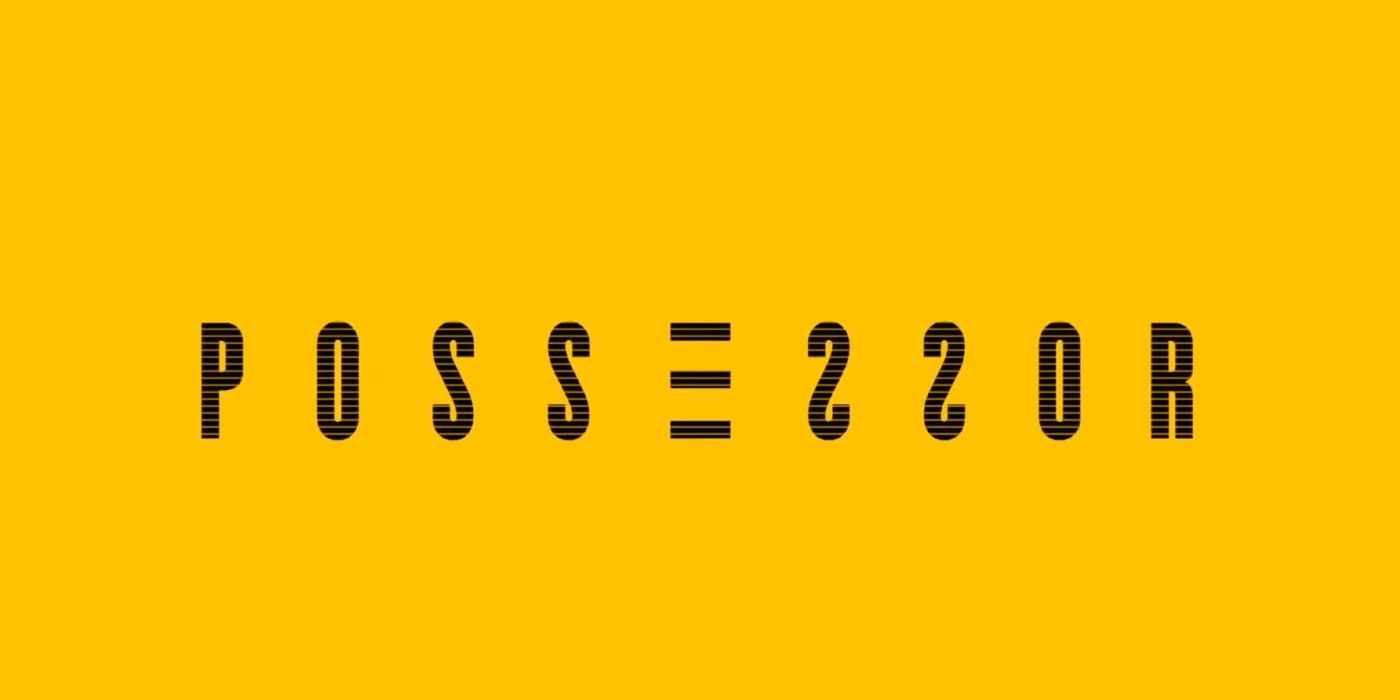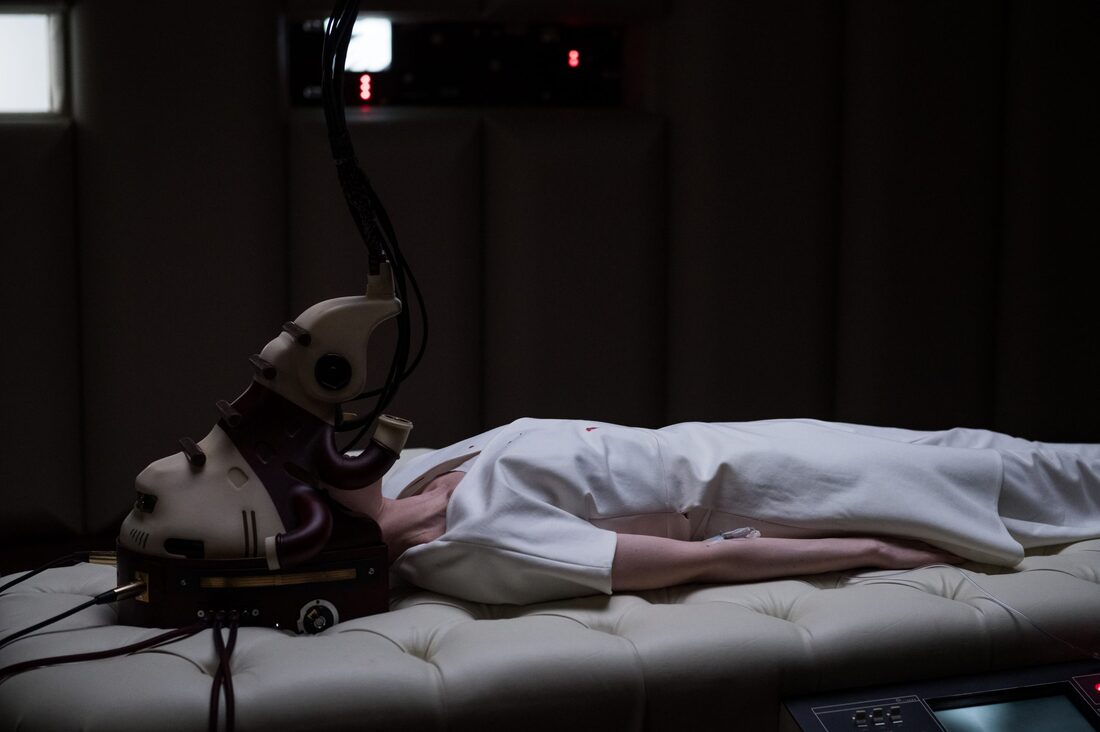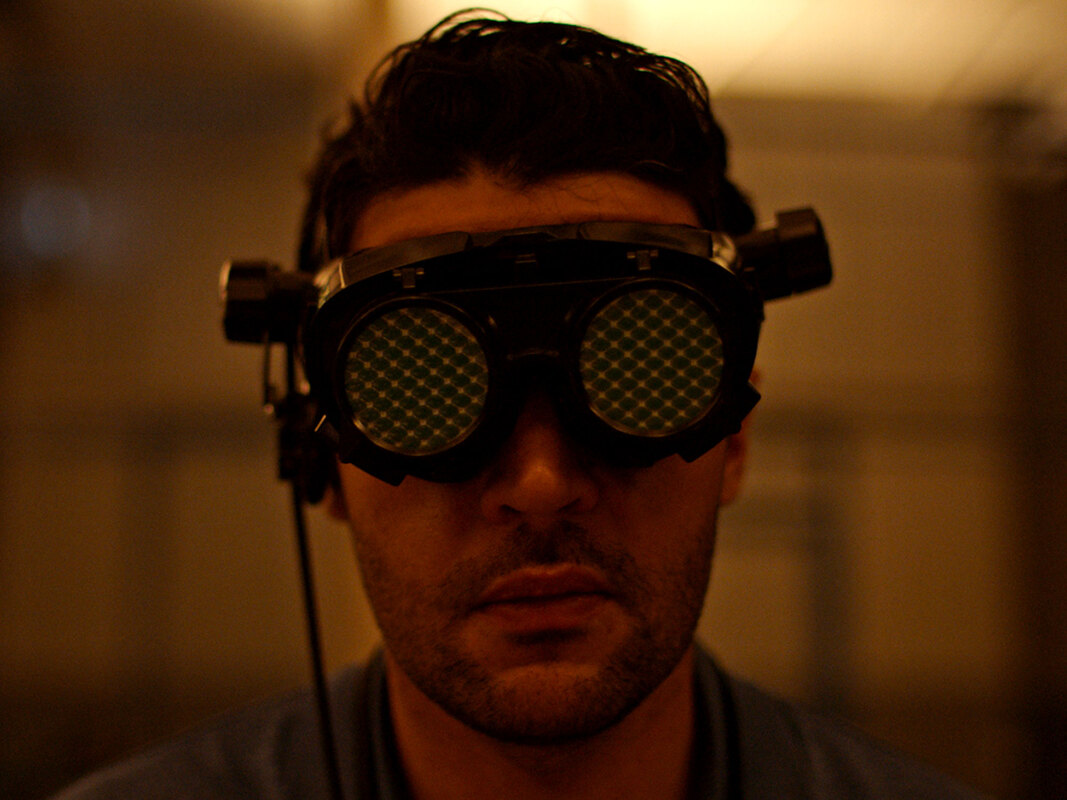This analysis contains spoilers for Possessor, which covers a variety of horror and gore. Reader discretion is advised.
This whole process of possessing someone is not done through consent, but by kidnapping the host and forcibly placing the implant into their brain. By the time they wake up from surgery, consciousness transfer has already been completed. Seeing that Colin fights back against Tas, it can be safe to assume that the host is aware of what is happening but is unable to stop it. This process of possession goes beyond coercion and manipulation of brainwashing someone. It streamlines the process by having the consciousness of someone willing to commit murder inside of you, and once the process has begun it is impossible to disconnect without destroying your body. All that is left for the host’s consciousness to do is watch in despair as their body is destroyed by their own hand. It goes without saying that this whole experience is immoral, with the host living through horrible events that ultimately causes the death of innocent people (both the hosts and Tas’ targets). Hosts are unwillingly subjected to being possessed. One day, Colin is hanging out with Ava, getting ready for dinner. The next he is kidnapped, has a device implanted into his brain, and he wakes up with someone else at the wheel. Unable to move or speak of his own will, he is trapped, forced to witness his world fall come apart by his hand. The string of events Colin goes through ends in death, which was inescapable the moment Tas took over him. The film agrees with this sentiment, sharing its views through character reaction and character consequences. This mainly happens through Colin, who fights against Tas for the control of his body. Tas and Colin undergo immersive mental strain, concluding with Colin having his own murderous impulses and killing Tas’ family. Tas is left with nothing, Colin ultimately dies, no one wins. Even the company Tas works for loses as she fails to fulfill the hit on John Parse. The lesson 'villains never win’ is shown here, illustrating how using this technology does not yield good results.
The present seems to be reaching ever closer to how we see the future of technology. We see VR reality in Possessor and realize it’s a future that isn’t that far away. It may have a price tag or be on store shelves, but it is something that people could develop and soon impact the world. What will be the advancement that tears us apart or leaves us in worse state than what we currently in? Will it allow us to do more than what should be possible? Sure, the ability to posses someone may seem far fetched, but the reality that nurtured this advancement is not. Incorporating VR headsets into the working environment can have damning implications, which Possessor introduces to us in just a portion of it’s runtime. The main story focuses on taking one’s consciousness into the body of another for the sake of committing untraceable crimes. This affects high value targets, select individuals who have a role in wealthy society. However, the film’s world reveals another evil, one that affects a larger population. This accessible technology shapes the way civilians work and take the element of treating employees well out of the question for large corporations.
Work Cited:
“Russian Cows Get VR Headsets 'to Reduce Anxiety'.” BBC News, BBC, 27 Nov. 2019, www.bbc.com/news/world-europe-50571010.




 RSS Feed
RSS Feed
